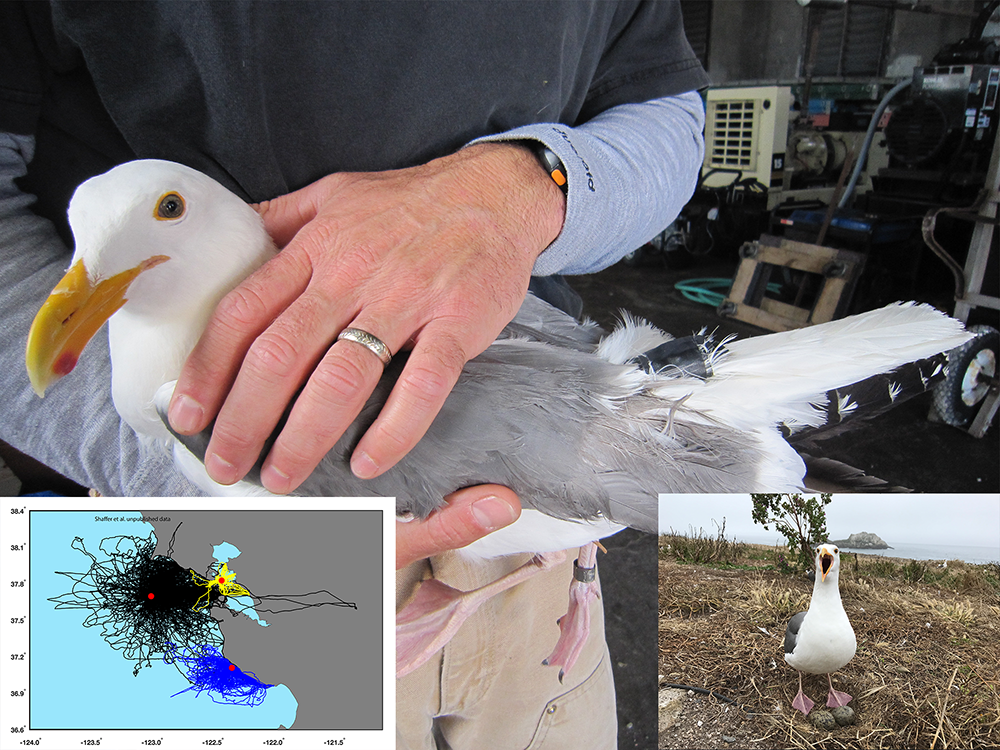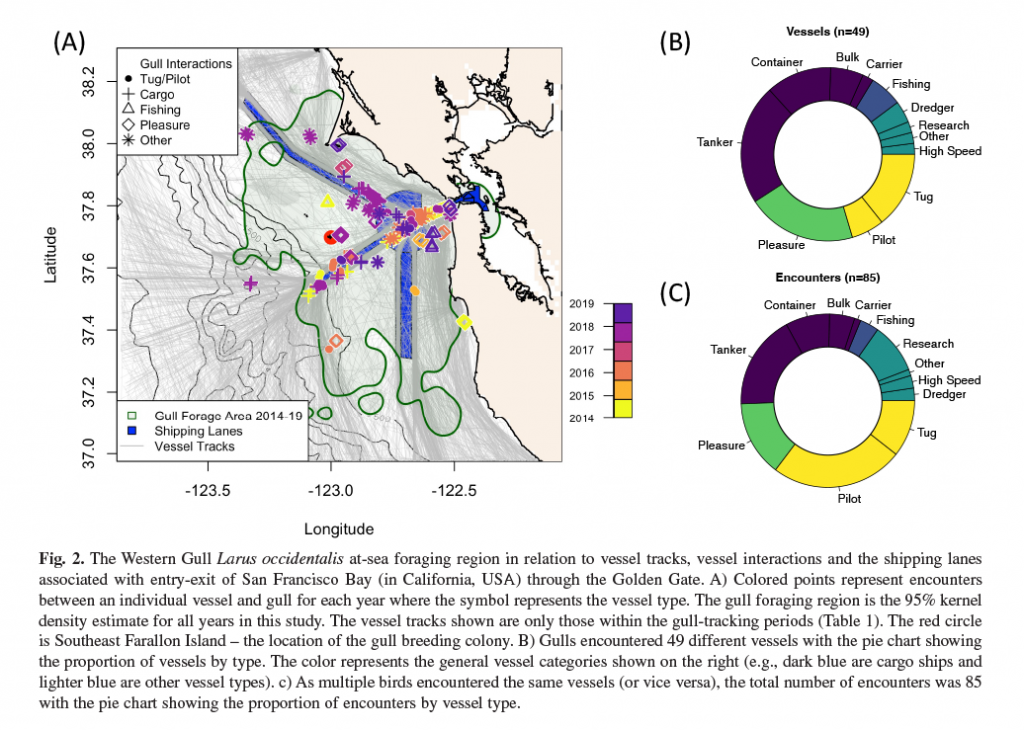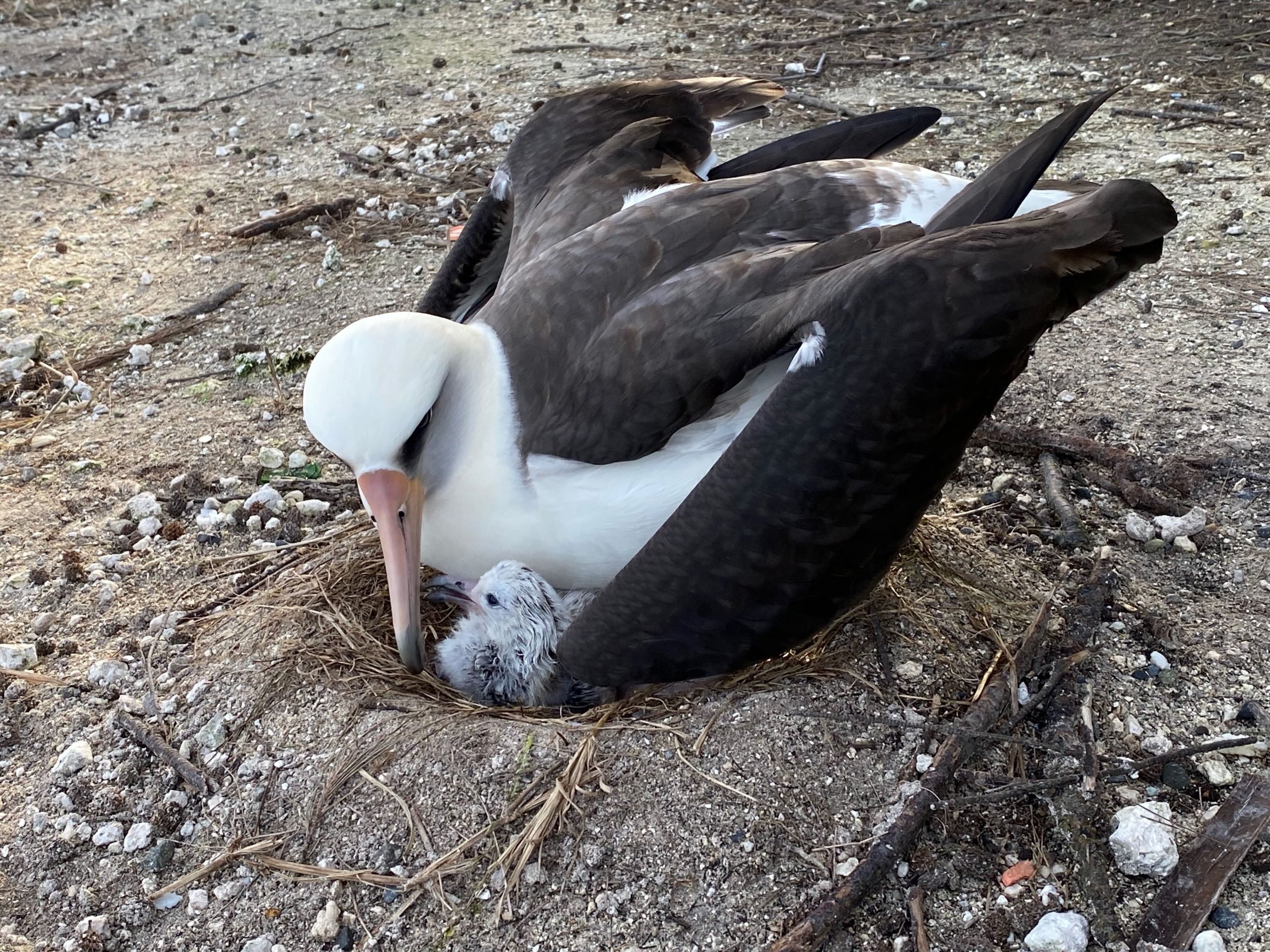
About the Lab
The ShAPE Lab is in the Biological Sciences Department at San Jose State University. Our primary focus is to understand how seabirds interact with their marine environment in ways that shape their ecology, physiology, and life history evolution. We use a variety of biologging methods to monitor behavior and sense the environment. More information about our research objectives can be found by reading lab member profiles, reviewing ShAPE Lab publications, or checking out the photo gallery.
Example research projects
Biologging devices like the data logger encapsulated within an artificial egg (shown in photo below) can be used to understand egg attendance behaviors like egg turning and incubation temperature (below left) in wild birds.
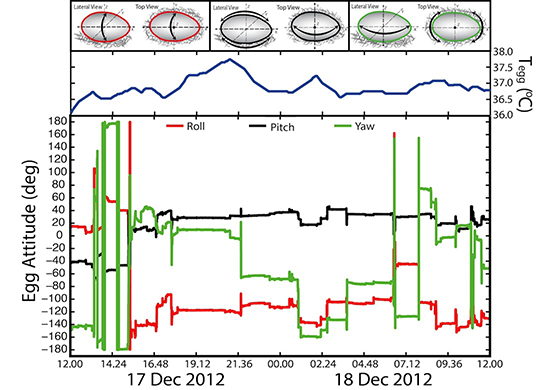
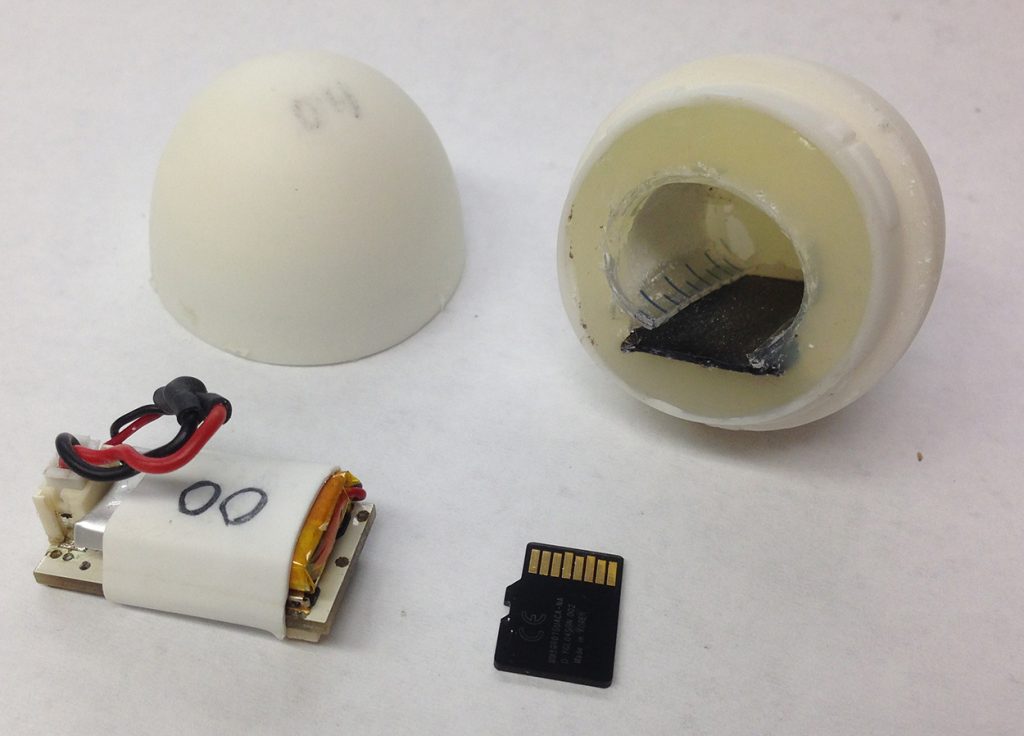
Miniature (18 grams) GPS devices like that deployed on this breeding Western gull shown in photo, can record the bird’s location and movement patterns at sea. The device is temporarily attached with adhesive tape to the tail feathers. The logger is removed 5-7 days after recording multiple foraging trips. The tracking data (lower left inset) can be viewed in relation to vessel locations at sea to explore gull-vessel interactions (see Fig. 2 at right from Cimino et al. (2024) Marine Ornithology).
